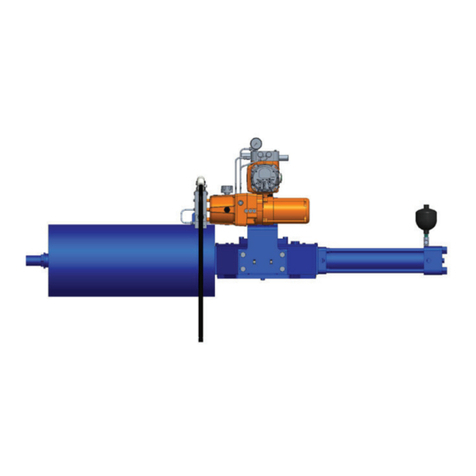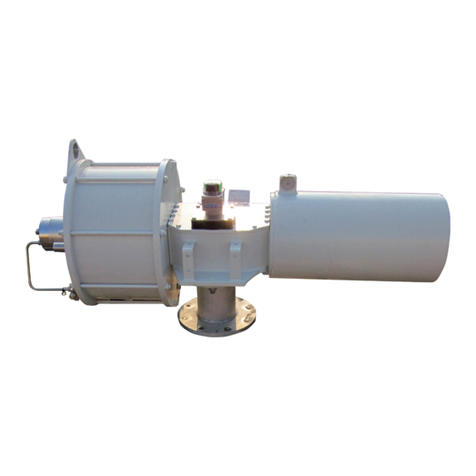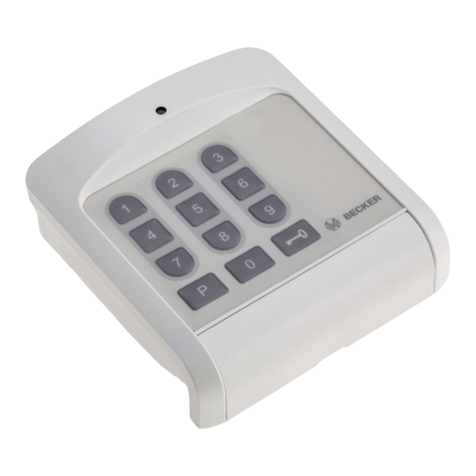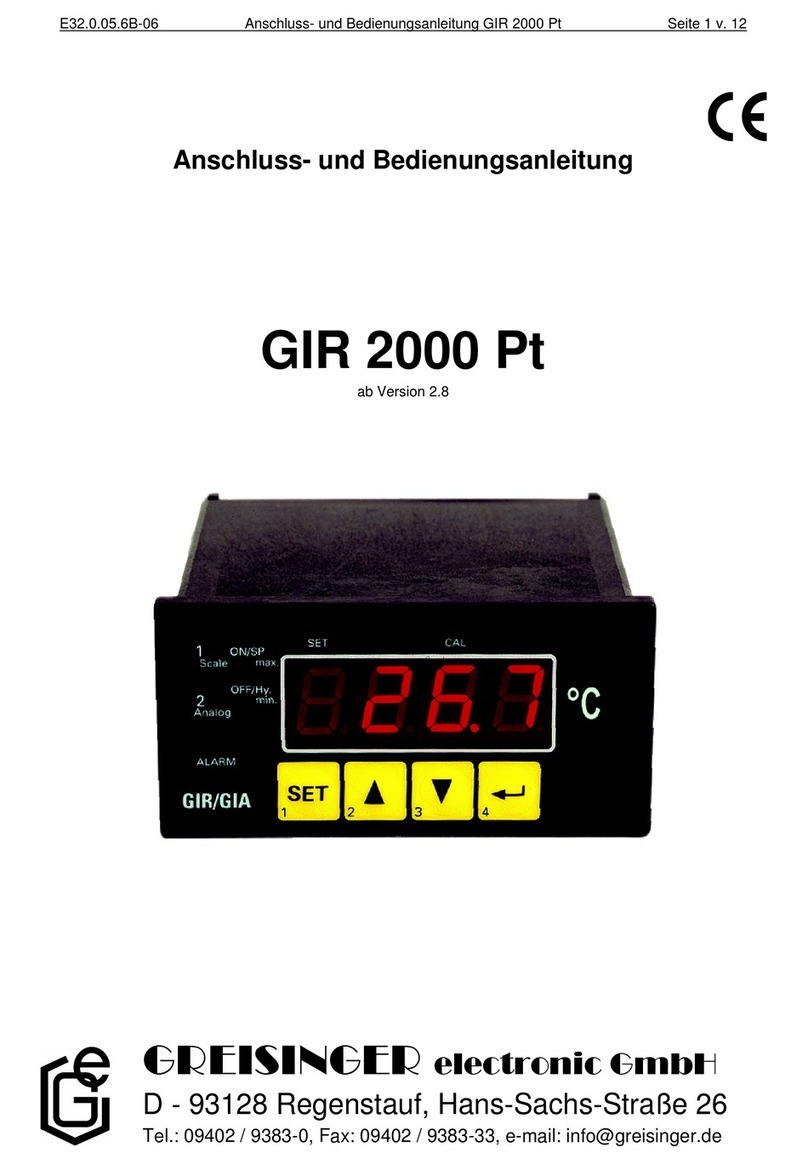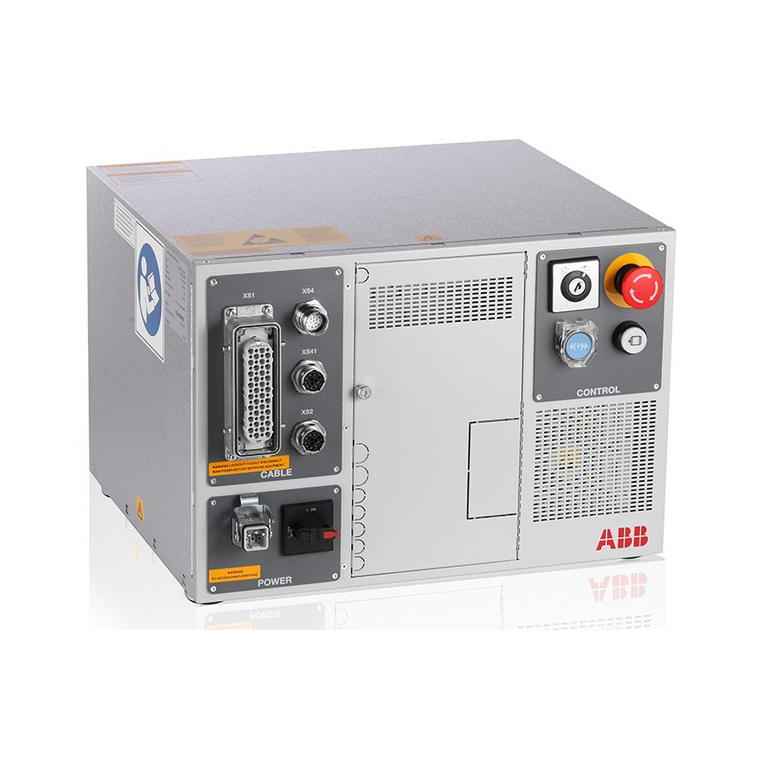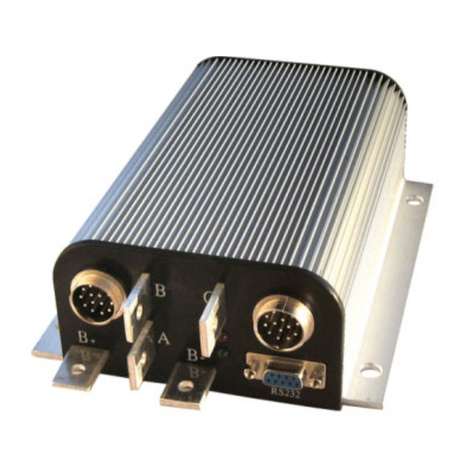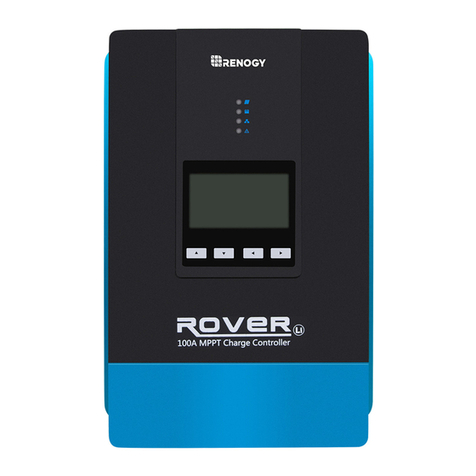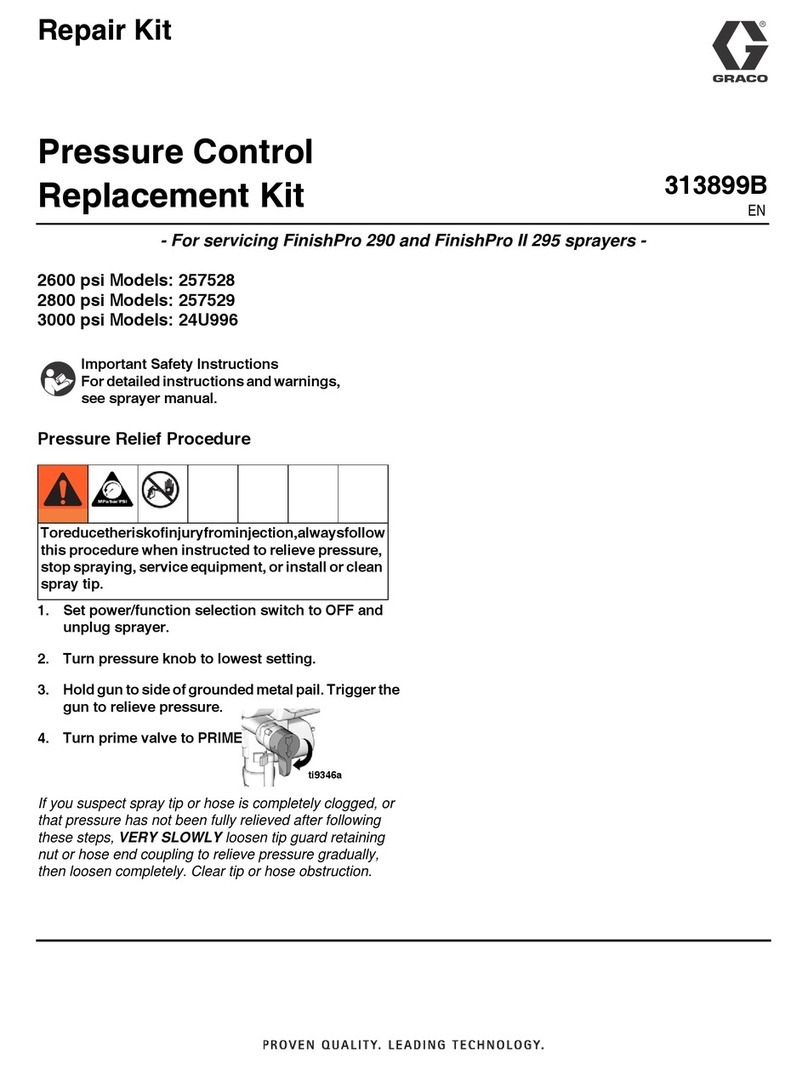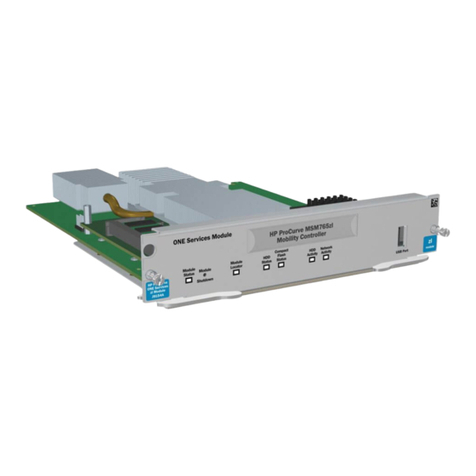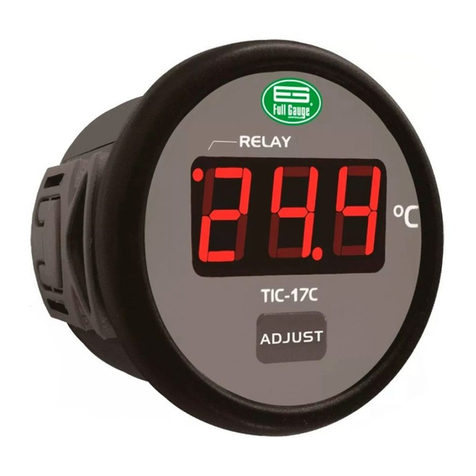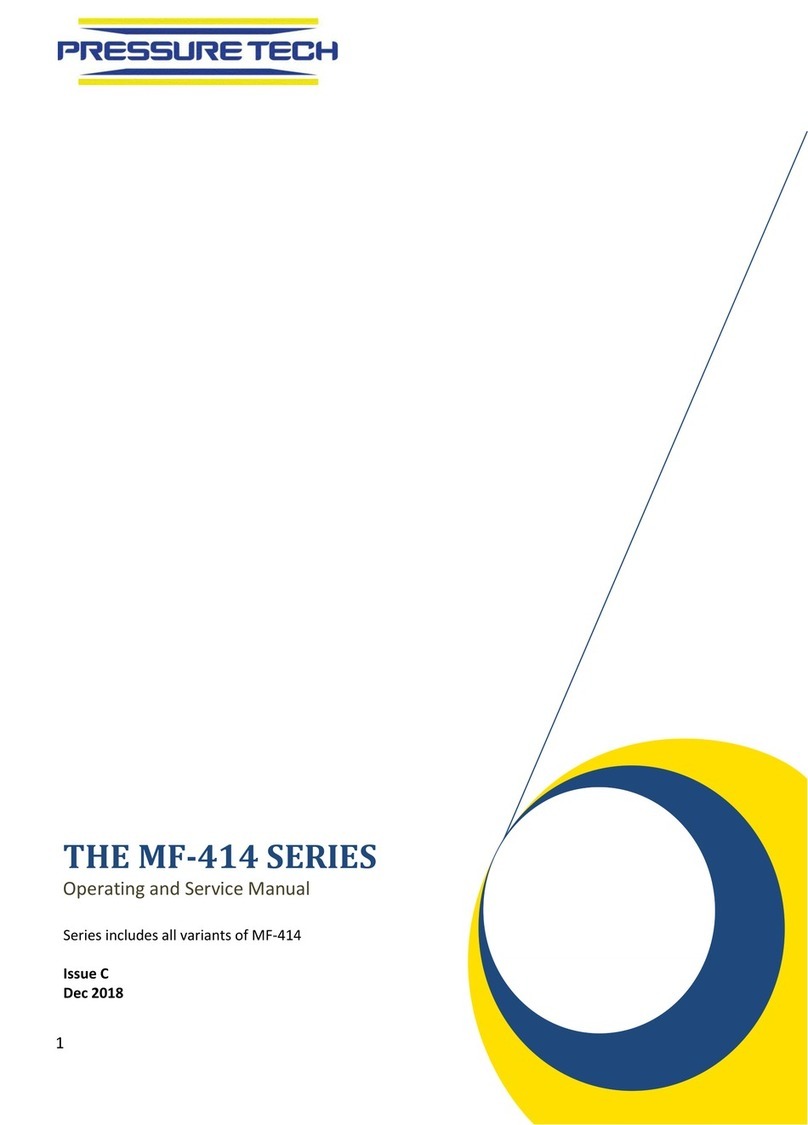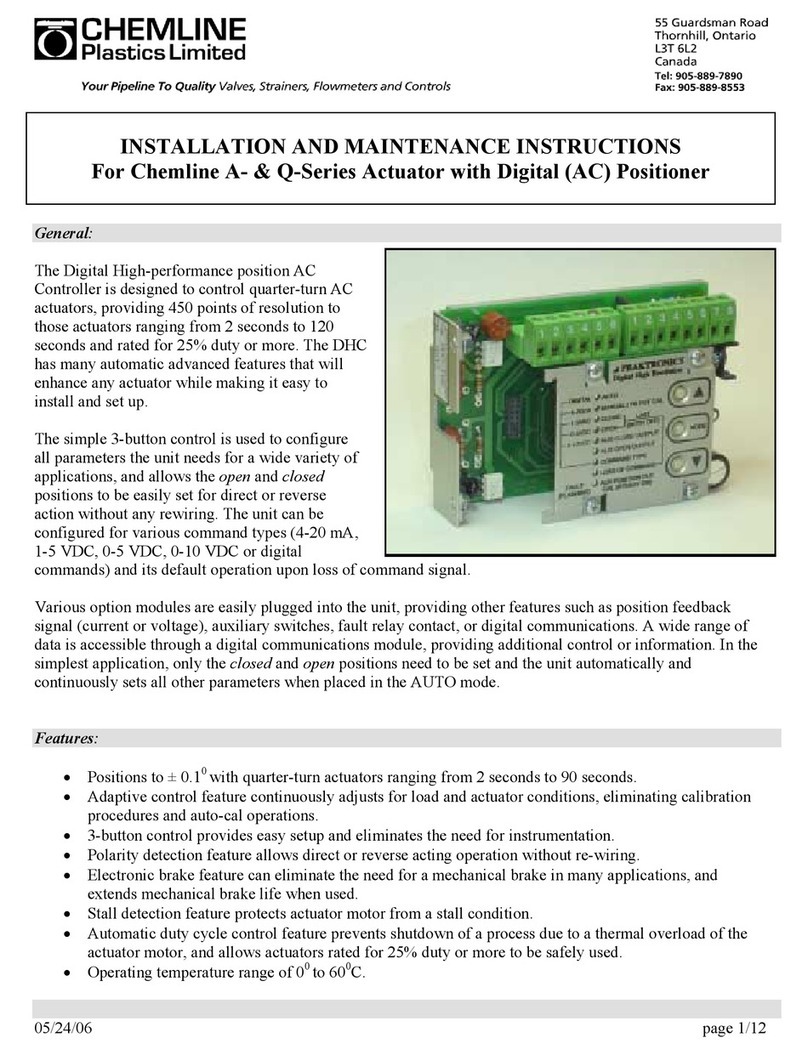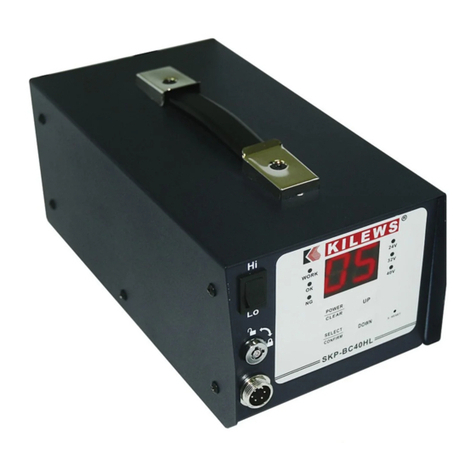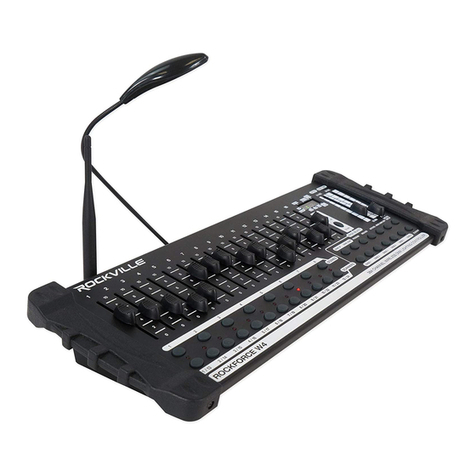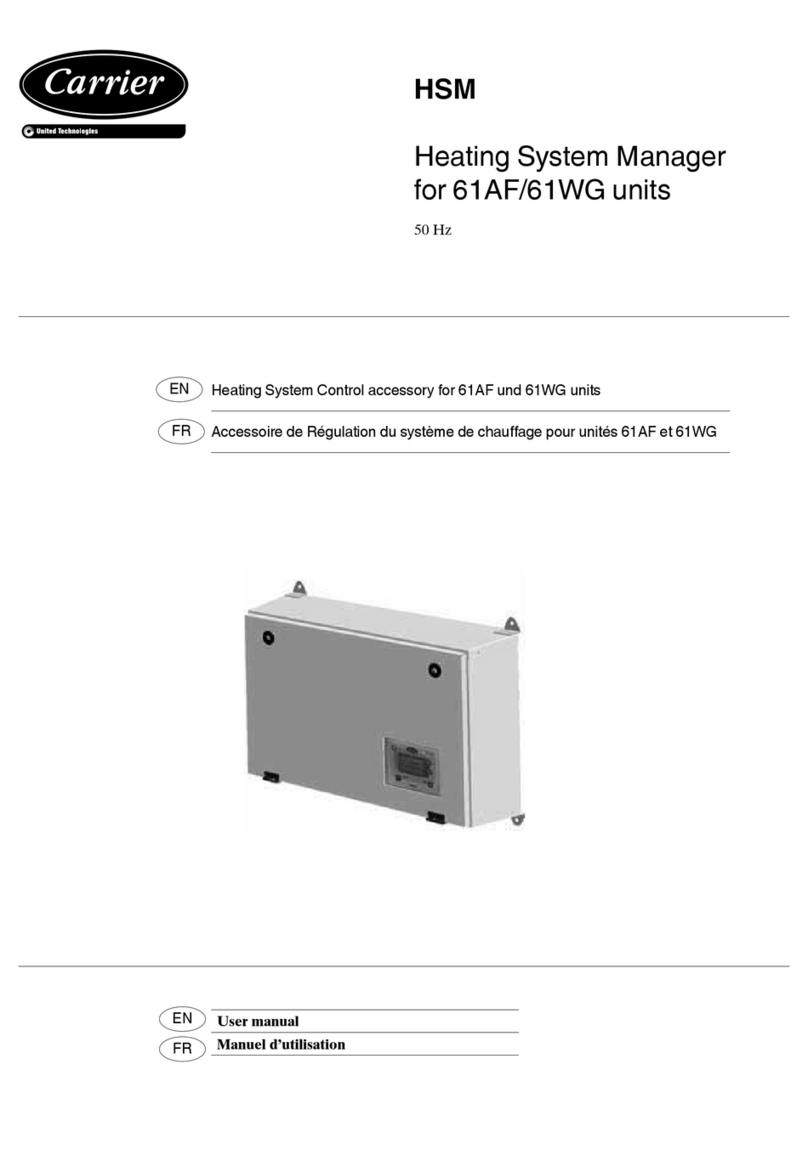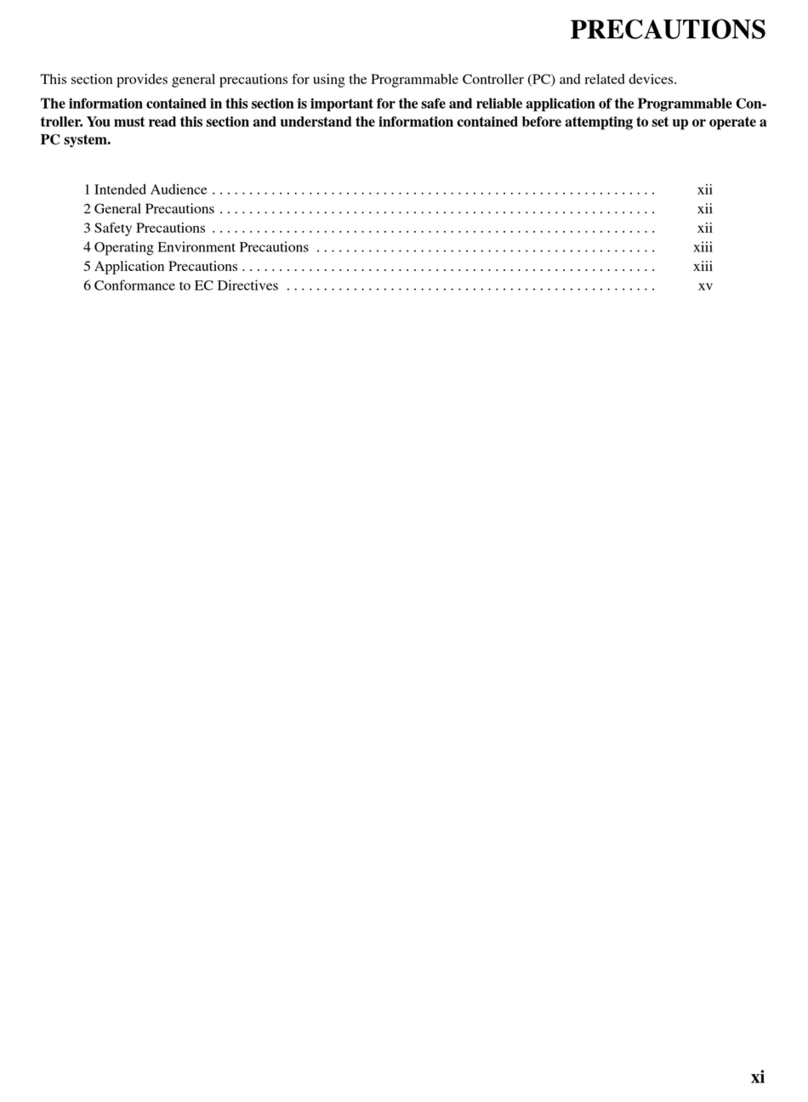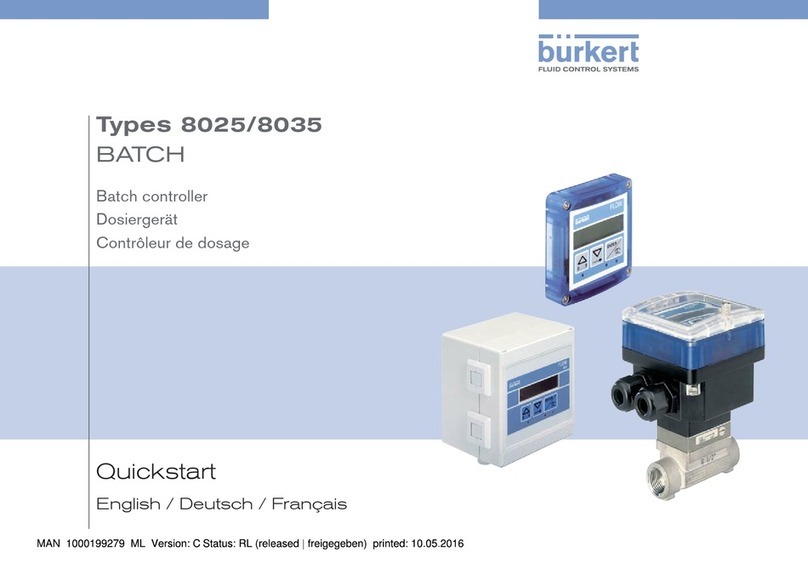BIFFI ALGAS-QA Series Manual

ALGAS-QA
Instruction and Operation Manual
© Copyright by BIFFI Italia. All right reserved page 1
Contents may change without notice
Instruction and Operation Manual
ALGAS-QA
“QUICK ACTING” SPRING
RETURN PNEUMATIC
ACTUATOR
MAN 616
4
21/03/18
Updated Data-plate
Ermanni
Orefici
Vigliano
3
18/04/16
Updated applicable
regulation (chapter 1.1.1)
Ermanni
Orefici
Vigliano
2
29/03/13
General update
Ermanni
Stoto
Vigliano
1
20/12/05
Updated document
Ermanni
Stoto
Vigliano
0
05/05/99
Document release
Lazzarini
Aliani
Ziveri
Rev.
Date
Description
Prepared
Checked
Approved

ALGAS-QA
Instruction and Operation Manual
© Copyright by BIFFI Italia. All right reserved page 2
Contents may change without notice
INDEX
1GENERAL WARNINGS---------------------------------------------------- 4
1.1 GENERALITIES --------------------------------------------------------------- 4
1.1.1 Applicable regulation -------------------------------------------------- 4
1.1.2 Terms and conditions ------------------------------------------------- 4
1.2 IDENTIFICATION PLATE------------------------------------------------------ 4
1.3 DESCRIPTION OF THE ACTUATOR ----------------------------------------- 5
2INSTALLATION -------------------------------------------------------------- 7
2.1 CHECKS TO BE CARRIED OUT ON RECEIVING THE ACTUATOR -------- 7
2.2 STORAGE --------------------------------------------------------------------- 7
2.3 ASSEMBLING THE ACTUATOR ONTO THE VALVE------------------------- 8
2.3.1 Types of assembly----------------------------------------------------- 8
2.3.2 Valve stem with vertical axis:---------------------------------------13
2.3.3 Valve stem with horizontal axis: -----------------------------------16
3OPERATION AND USE---------------------------------------------------19
3.1 OPERATION DESCRIPTION -----------------------------------------19
3.2 RESIDUAL RISKS--------------------------------------------------------20
3.3 OPERATIONS-------------------------------------------------------------20
3.4 CALIBRATION OF THE QUICK OPERATION TIME------------20
3.4.2 BY-PASS ADJUSTMENT-------------------------------------------22
3.5 SETTING OF THE ANGULAR STROKE -------------------------------------23
3.6 MICROSWITCHES CALIBRATION (APPLICABLE TO BIFFI LIMIT
SWITCH BOX MODEL ONLY) --------------------------------------------------------28
3.7 PREPARATION FOR START-UP --------------------------------------------30
3.7.1 Pneumatic connections----------------------------------------------30
3.7.2 Electrical connections------------------------------------------------30
3.8 START-UP--------------------------------------------------------------------31
4OPERATIONAL TESTS AND INSPECTIONS----------------------32
5MAINTENANCE-------------------------------------------------------------32
5.1 ROUTINE MAINTENANCE ---------------------------------------------------32
5.2 EXTRAORDINARY MAINTENANCE -----------------------------------------33
5.2.1 Replacement of cylinder seals-------------------------------------34
5.3 LUBRICATION OF MECHANISM---------------------------------------------37
5.4 DISMANTLING AND DEMOLITION ------------------------------------------38
6TROUBLESHOOTING-----------------------------------------------------39
6.1 FAILURE OR BREAKDOWN RESEARCH ------------------------39
7LAYOUTS & SECTIONAL DRAWINGS------------------------------40
7.1PARTS-LIST FOR MAINTENANCE AND REPLACING PROCEDURE------40
8SPARE PARTS--------------------------------------------------------------45
9DATE REPORT FOR MAINTENANCE OPERATIONS ----------46

ALGAS-QA
Instruction and Operation Manual
© Copyright by BIFFI Italia. All right reserved page 3
Contents may change without notice
NOTES:
BIFFI Italia has taken every care in collecting and verifying the
documentation contained in this instruction and operating manual.
Nevertheless Biffi Italia does not provide any guarantees for this
instruction manual. BIFFI Italia will not be responsible for any
mistakes contained in it or for any damage either accidental or due to
the use of this manual. The information herein contained is reserved
property of BIFFI Italia and is subject to being modified without
notice.

ALGAS-QA
Instruction and Operation Manual
© Copyright by BIFFI Italia. All right reserved page 4
Contents may change without notice
1General warnings
The manual is an integral part of the machine, it should
be carefully read before carrying out any operation and
it should be kept for future references.
1.1 Generalities
BIFFI Italia S.r.l actuators are conceived, manufactured and
controlled according to the Quality Control System in compliance with
EN-ISO 9001 international regulation.
1.1.1 Applicable regulation
EN ISO 12100:2010: Safety of machinery –General principles for
design –Risk assessment and risk reduction
2006/42/EC: Machine directive.
2014/68/EU: Directive for pressure PED equipment
2014/35/EU: Directive for low voltage equipment
2014/30/EU: Directive for the electromagnetic compatibility
2014/34/EU: Directive and safety instructions for use in
hazardous area
1.1.2 Terms and conditions
Biffi Italia srl guarantees that all the items produced are free of
defects in workmanship and manufacturing materials and meet
relevant current specifications, provided they are installed, used and
serviced according to the instructions contained in the present
manual. The warranty can last either one year from the date of
installation by the initial user of the product, or eighteen months from
the date of shipment to the initial user, depending on which event
occurs first. All detailed warranty conditions are specified in the
documentation forwarded together with the product. This warranty
does not cover special products or components not warranted by
subcontractors, or materials that were used or installed improperly or
were modified or repaired by unauthorized staff. In the event that a
fault condition be caused by improper installation, maintenance or
use, or by irregular working conditions, the repairs will be charged
according to applicable fees. The warranty and Biffi Italia srl
liability shall lapse in the event that any modification or
tampering whatsoever be performed on the actuator.

ALGAS-QA
Instruction and Operation Manual
© Copyright by BIFFI Italia. All right reserved page 5
Contents may change without notice
1.2 Identification plate
It is forbidden to modify the information and the marks
without previous written authorization by BIFFI Italia S.r.l.
The plate fastened on the actuator contains the following
information (Figure1).
Figure 1 –Data plate
1.3 Description of the actuator
“Algas-QA” quick acting spring return pneumatic low pressure
actuators, are suitable for the operation of quarter turn valves (ball
valves, butterfly valves, plug valves)
These actuators are suitable to achieve a very short time in
emergency operation performed by the spring, independently from
the flow capacity of supply lines to the actuator.
In fact the quick operation is requires normally only to bring the valve
to the “safe” position.
The operating time can be lower than one second, depending on the
process characteristics, valve size and operating pressure.
The actuator is made up of a weatherproof scotch yoke mechanism
transforming the linear movement of the pneumatic cylinder (or
mechanical manual override, if foreseen) and of the spring into the
rotary movement, which is necessary for operation.
The pneumatic cylinder is fitted with an integral “quick exhaust valve”
directly assembled on the end flange.
Furthermore the cylinder has a specific dumping system to gradually
reduce the speed in the last portion of the valve stroke, avoiding
possible impact damages to the valve trim and to the actuator itself.
The spring return pack incorporates up to four springs, fully
encapsulated in a factory welded cartridge: this ensures safety to
personnel and simplifies assembly. The spring action can be easily
changed in the field from to close in to open or from to open in to
close (modular design).

ALGAS-QA
Instruction and Operation Manual
© Copyright by BIFFI Italia. All right reserved page 6
Contents may change without notice
The angular stroke of the yoke is adjustable between 82° and 98° by
means of the external mechanical stops screwed into the end flange
of the pneumatic cylinder and into the end flange of the spring return
pack . The cover of the scotch yoke mechanism is arranged for the
assembly of the required accessories (position-transmitter, signaling-
limit switches, positioner , etc.) by means of proper matching units.
The above mentioned accessories are operated by the actuator drive
sleeve.
The housing of the scotch yoke mechanism has a flange with
threaded holes to fix the actuator to the valve either directly or, if
required, with the interposition of an adaptor flange or a mounting
bracket.
The actuator yoke has a hole with keyways suitable for the assembly
of an insert bush or a stem extension. Their internal hole is machined
(by BIFFI or at Customer's care), according to the shape and
dimensions of the valve stem.
BIFFI can supply different types of control system following
Customer's requirements.
K
Version
- Standard
QA Quick Acting
Fail Safe Action
CL Spring to close
OP Spring to open
Cylinder Size
Spring Cartridge Model
Scotch Yoke Version
C Canted
S Symmetric
Actuator Model
Actuator Series
Always ALGAS
ALGAS
Single Acting Pneumatic Actuators ALGAS series
XXX
YYYYY
ZZZZ
F
S
The expected lifetime of actuator is approximately 25 years .

ALGAS-QA
Instruction and Operation Manual
© Copyright by BIFFI Italia. All right reserved page 7
Contents may change without notice
2Installation
2.1 Checks to be carried out on receiving the
actuator
1) If the actuator arrives already assembled onto the valve, the
settings of the mechanical stops and of the micro switches (if
existing) has already been made by the person who assembled
the actuator onto the valve. If the actuator arrives separately from
the valve, the settings of the mechanical stops and of the micro
switches (if existing) must be checked and, if necessary, carried
out while assembling the actuator onto the valve.
2) Check that the actuator has not been damaged during transport. If
necessary, repair all damages to the paint-coat, etc.
3) Check that the model, the serial number of the actuator and the
performance data written on the data-plate are in accordance with
those described on the order acknowledgement, test certificate
and delivery note.
4) Check that the fitted accessories comply with those listed in the
order acknowledgement and the delivery note.
2.2 Storage
(for handling and lifting procedure, please refer to following
figures: 2.1- 2.2- 2.3)
The actuators leave the factory in excellent working conditions and
with an excellent finish (these conditions are guaranteed by an
individual inspection certificate); in order to maintain these
characteristics until the actuator is installed on the plant, it is
necessary to observe a few rules and take appropriate measures
during the storage period.
1) Make sure that plugs are fitted in the air connections and in the
cable entries. The plastic plugs, which close the inlets, do not have
a weatherproof function, but are only a means of protection
against the entry of foreign matter during transport. If long-term
storage is necessary and especially if the storage is outdoors,
metal plugs must replace the plastic protection plugs, which
guarantee a complete weatherproof protection.
2) If the actuators are supplied separately from the valves, they must
be placed onto a wooden pallet so as not to damage the coupling
flange to the valve. In case of long-term storage, the coupling
parts (flange, drive sleeve, insert bush) must be coated with
protective oil or grease. If possible, blank off the flange by a
protection disk.

ALGAS-QA
Instruction and Operation Manual
© Copyright by BIFFI Italia. All right reserved page 8
Contents may change without notice
3) In case of long-term storage, it is advisable to keep the actuators
in a dry place or to provide at least some means of weather
protection. If possible, it is also advisable, to periodically operate
the actuator with filtered, dehydrated and lubricated air; after such
operations all the threaded connections of the actuator and the
valves of the control panel (if existing) should be carefully plugged.
2.3 Assembling the actuator onto the valve
2.3.1 Types of assembly
For coupling to the valve, the housing is provided with a flange with
threaded holes according to Biffi standard tables (SCN6200;
SCN6200-1; SCN6201; SCN6201-1). The number, dimensions and
diameter of the holes are made in accordance with ISO 5211, but for
actuator models 0.3 to 6 the holes are drilled on the centreline in
order to allow an easier assembly of an intermediate flange, when
required. This intermediate flange ( or spool-piece ) can be supplied
when the valve flange cannot directly match the actuator flange in its
“standard” configuration. For the biggest actuator models, the
actuator flange can be machined in accordance with the valve flange
dimensions.
The yoke has bored with keyways for coupling to the valve stem, the
dimensions of which are according to Biffi standard tables SCN6200*
and SCN6201*.

ALGAS-QA
Instruction and Operation Manual
© Copyright by BIFFI Italia. All right reserved page 9
Contents may change without notice

ALGAS-QA
Instruction and Operation Manual
© Copyright by BIFFI Italia. All right reserved page 10
Contents may change without notice

ALGAS-QA
Instruction and Operation Manual
© Copyright by BIFFI Italia. All right reserved page 11
Contents may change without notice
If required, for the standard models size 0.3 to 6, Biffi can supply an
insert bush with un-machined bore in accordance with Biffi standard
table SCN6202. On request the insert bush bore can be machined by
Biffi to couple the valve stem, provided its dimensions match the
maximum stem acceptance of the bush according to Biffi table
TN1005, enclosed. The particular execution of the flange and
bushing allow the actuator to be rotated by 90° in 4 different positions
according to the following figure:

ALGAS-QA
Instruction and Operation Manual
© Copyright by BIFFI Italia. All right reserved page 12
Contents may change without notice
Position 2 Position 3 Position 4
Rotate insert-bush
180° around
vertical-standard
position (1)
Rotate insert-bush
180° around axis A-A,
from position 2
Rotate insert-bush
180° around axis A-
A from position 1
Insert bush turned upside down
Picture 4 –Insert bush + intermediate coupling flange
The Biffi insert bush with 2 external keys at 45° allows to position the
keyway for the valve every 90°. Consequently actuator can be
mounted in 4 positions at 90° on top of the valve. For biggest
actuator models, the bore of the yoke can be machined according to
the dimensions of valve stem.

ALGAS-QA
Instruction and Operation Manual
© Copyright by BIFFI Italia. All right reserved page 13
Contents may change without notice
2.3.2 Valve stem with vertical axis:
The lifting and handling of the actuator must be done by
qualified personnel and in accordance with the laws and
regulations in force. Avoid the lifted actuator to be hung
above the personnel.
The actuator must be lifted by means of a suitable lifting
apparatus. The weight of the actuators is indicated in
the technical documentation attached to the equipment
itself.
For lifting and moving the actuator, use only hooks fitted
with safety latch, like the one, for example, shown in
follow figure 2.1
Figure 2.1 –Lifting points: 1-2 (mandatory) 3 (balancing)
Lift ALGAS-QA actuators (pneumatic spring return) by means of the
proper lifting points represented and indicated on actuator by
sticking labels. Also refer to figures 2.2 for lifting points positions.
Figure 2.3
Figure 2.1 Example of hook with
safety latch

ALGAS-QA
Instruction and Operation Manual
© Copyright by BIFFI Italia. All right reserved page 14
Contents may change without notice
•For lifting unbalanced loads, use ropes of different lengths or
chains with adjustable length.
•Check each time the conditions of all lifting equipment used
and discard it if not in perfect working order.
•Do not knot or twist the ropes so as not to reduce the lifting
capacity or produce torsional effects on the load being lifted.
•Use the utmost caution and remain at a safe distance from
lifted actuator unless absolutely necessary; do not stand or
pass under suspended loads.
•Pay attention in putting under tension the ropes to prevent the
load shifting sideways in an uncontrolled manner.
•Use slings of such length that the angles of the leg from
vertical are as narrow as possible (MAX < 20°).
•During handling, do not transport the suspended actuator
above staff members in charge of the operation.
DO NOT USE the lifting eyelets on actuator to lift valve +
actuator assembly
Any lifting method different from what described above is
strictly forbidden.
BIFFI reject any responsibility for damages to goods or
injuries to persons coming from wrong lifting operations.
The actuator can be assembled onto the valve flange either by using
the actuator-housing flange with threaded holes, or by the
interposition of an adaptor flange or a spool piece.
Figure 2.4

ALGAS-QA
Instruction and Operation Manual
© Copyright by BIFFI Italia. All right reserved page 15
Contents may change without notice
The actuator drive sleeve is generally connected to the valve stem by
an insert bush or a stem extension.
The assembly position of the actuator, with reference to the valve,
must comply with the plant requirements (cylinder axis parallel or
perpendicular to the pipeline axis).
To assemble the actuator onto the valve proceed as follows:
1) Check that the coupling dimensions of the valve flange and stem,
or of the relevant extension, meet the actuator coupling
dimensions.
2) Bring the valve to the position related to the actuator spring
operation.
3) Lubricate the valve stem with oil or grease in order to make the
assembly easier. Be careful not to pour any of it onto the flange.
4) Clean the valve flange and remove anything that might prevent a
perfect adherence to the actuator flange and especially all traces
of grease, since the torque is transmitted by friction.
5) If an insert bush or stem extension for the connection to the valve
is supplied separately, assemble it onto the valve stem and fasten
it by tightening the proper stop dowels.
6) Bring the actuator to the position caused by the spring operation.
7) Connect a sling to the support points of the actuator and lift it:
make sure the sling is suitable for the actuator weight. When
possible, it is easier to assemble the actuator to the valve if the
valve stem is in the vertical position. In this case the actuator must
be lifted while keeping the flange in the horizontal position.
8) Clean the actuator flange and remove anything that might prevent
a perfect adherence to the valve flange and especially all traces of
grease.
9) Lower the actuator onto the valve in such a way that the insert
bush, assembled on the valve stem, enters the actuator drive
sleeve. This coupling must take place without forcing and only with
the weight of the actuator. When the insert bush has entered the
actuator drive sleeve, check the holes of the valve flange. If they
do not meet with the holes of the actuator flange or the stud bolts
screwed into them, the actuator drive sleeve must be rotated; feed
the actuator cylinder with air at proper pressure, indicated on data-
sheet for actuator.
10)Tighten the nuts of the connecting stud bolts evenly with the
torque prescribed in the table. The stud bolts must be made of
ASTM A320 L7 steel; the nuts must be made of ASTM A194 grade
2 steel.

ALGAS-QA
Instruction and Operation Manual
© Copyright by BIFFI Italia. All right reserved page 16
Contents may change without notice
THREAD
SIZE
RECOMMENDED TIGHTENING
TORQUE (Nm)
M8
20
M10
40
M12
70
M14
110
M16
160
M20
320
M22
420
M24
550
M27
800
M30
1100
M33
1400
M36
1700
11)If possible, operate the actuator to check that it moves the
valve smoothly.
2.3.3 Valve stem with horizontal axis:
The actuator can also be lifted to assemble directly onto the valve
with stem with horizontal axis. To make a correct lifting procedure
proceed as follow:
1) Connect properly the actuator lifting points 1 with chains, and
connect by suitable slings the support brackets 2 and 3

ALGAS-QA
Instruction and Operation Manual
© Copyright by BIFFI Italia. All right reserved page 17
Contents may change without notice
2) Balance the weight and lift the actuator until to make possible the
rotation of actuator in its final mounting position, with cylinder on
top, or spring container placed on top, as showed in the following
images:

ALGAS-QA
Instruction and Operation Manual
© Copyright by BIFFI Italia. All right reserved page 18
Contents may change without notice
3) Clean the actuator flange and remove anything that might
prevent a perfect adherence to the valve flange and especially all
traces of grease.
4) Lift the actuator near to the valve in such a way that the insert
bush, assembled on the valve stem, enters the actuator drive
sleeve without forcing the coupling . When the insert bush has
entered the actuator drive sleeve, check the holes of the valve
flange. If they do not meet with the holes of the actuator flange or
the stud bolts screwed into them, the actuator drive sleeve must
be rotated; feed the actuator cylinder with air at proper pressure,
indicated on data-sheet for actuator.
5) Tighten the nuts of the connecting stud bolts evenly with the
torque prescribed in the table. The stud bolts must be made of
ASTM A320 L7 steel; the nuts must be made of ASTM A194
grade 2 steel.
6) If possible, operate the actuator to check that it moves the valve
smoothly.

ALGAS-QA
Instruction and Operation Manual
© Copyright by BIFFI Italia. All right reserved page 19
Contents may change without notice
3Operation and Use
3.1 OPERATION DESCRIPTION
The actuator is operated by:
1) Pressurized motor fluid.
2) Elastic return of compression helicoidally spring.
In the first case the alimentation fluid pressurizes a chamber of the
cylinder and compresses the spring (Figure 4); this determines the
linear motion of the piston and the consequent rotation motion of the
scotch yoke mechanism to which valve stem is coupled.
The fluid contained in the other chamber is discharged through the
return line.
In the second case, cutting off or in case of lack of pressure to the
cylinder and to the pilot of the fast discharge valve, the opening of
the latter is determined, the fast discharge of motor fluid, the quick
extension of the spring and the consequent fast operation of the
actuator. The motor fluid going out from one chamber of the cylinder
partially returns in the other chamber and partially flows through the
discharge line.
Figure 3 –Angular stroke / quick operation time diagram
The last part of the cylinder stroke is strongly slowed down by a
damper with 2 by-pass system that throttles the outlet of the motor
fluid. Figure 3 shows the diagram angular stroke/time. By-pass action
must be regulate to make more slowly the last part of cylinder stroke
(see chapter 3.4.1)

ALGAS-QA
Instruction and Operation Manual
© Copyright by BIFFI Italia. All right reserved page 20
Contents may change without notice
The power and control systems are supplied on specific customer
demand.
For the relevant information please refer to the specific
documentation supplied.
Figure 4 –Generic Operating diagram
3.2 RESIDUAL RISKS
The actuator has parts under pressure. Use the due caution.
Use individual protections provided for by the laws and
provisions in force.
3.3 OPERATIONS
The operations are carried out sending the proper signal through the
control system in compliance with Customer specifications.
Please refer to the functional diagram and specific documentation
supplied.
3.4 CALIBRATION OF THE QUICK OPERATION TIME
The calibration of the quick operation time of the actuator is carried
out through the adjustment of the quick exhaust valve positioned in
the tail flange of the pneumatic cylinder (Picture 3.4.1).
The calibration of the operation time is made by Biffi Italia S.r.L
according to customer requirements and to technical data-sheet
included in technical documentation. If necessary it’s possible to
modify or to re-set the operating time
Table of contents
Other BIFFI Controllers manuals
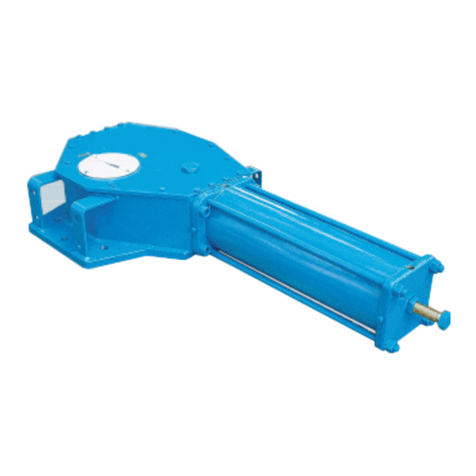
BIFFI
BIFFI OLGA Series User manual
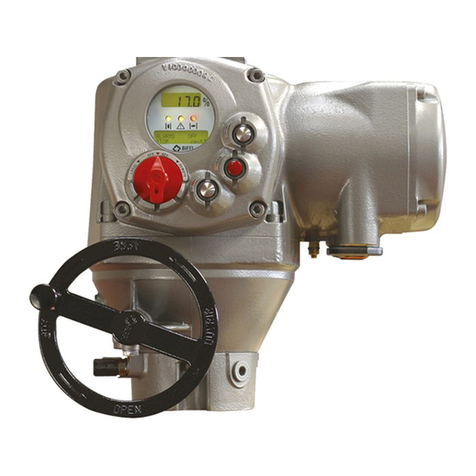
BIFFI
BIFFI F01-2000 User manual
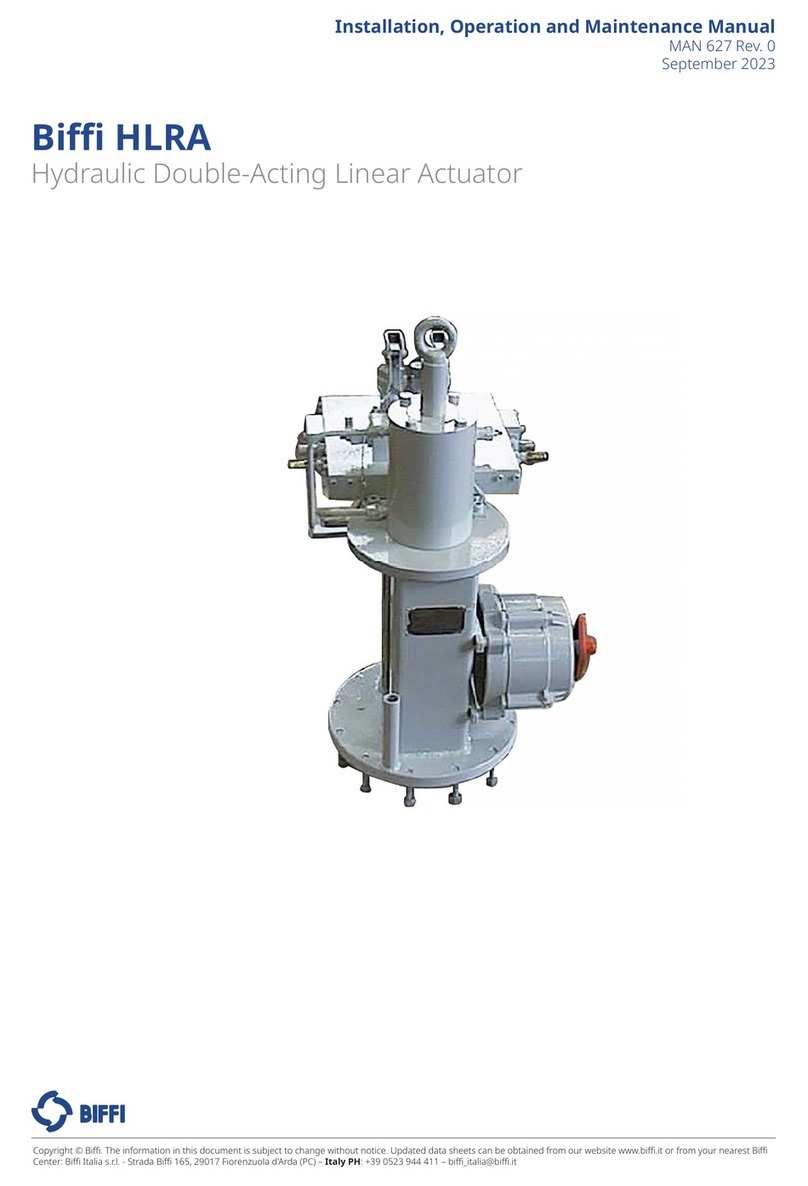
BIFFI
BIFFI HLRA User manual
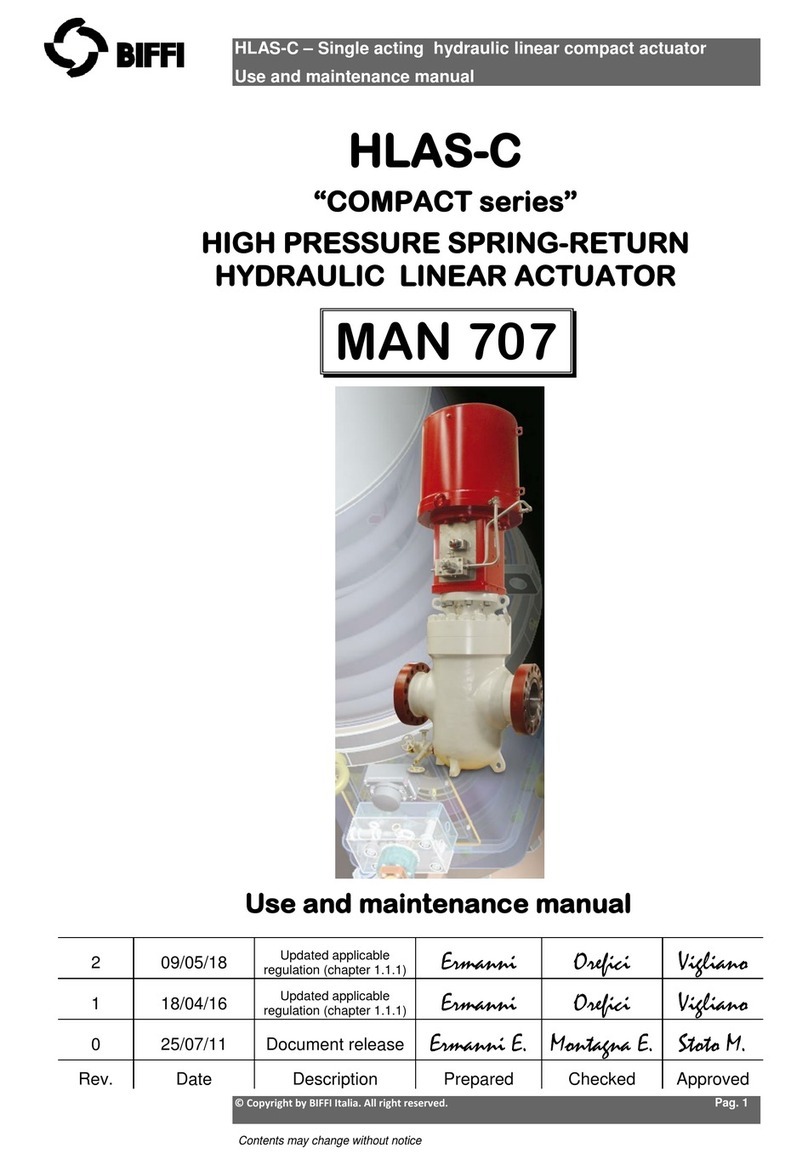
BIFFI
BIFFI COMPACT Series User manual
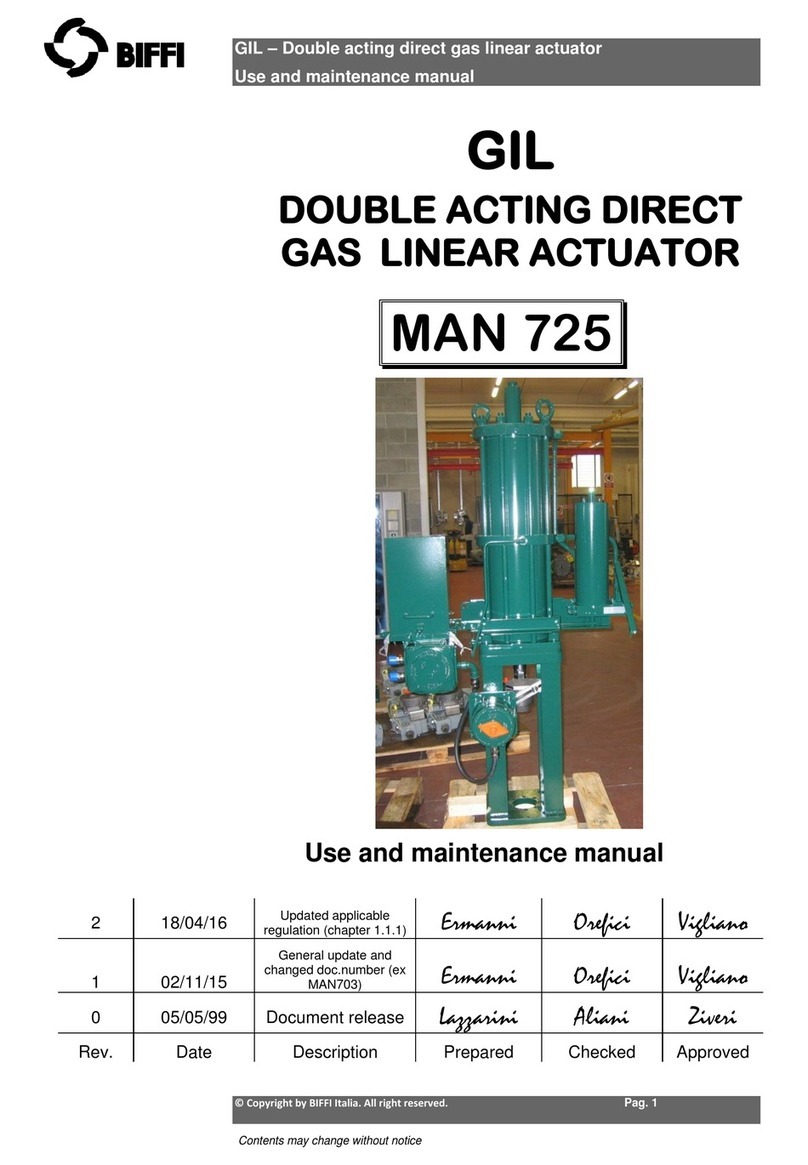
BIFFI
BIFFI GIL MAN 725 User manual
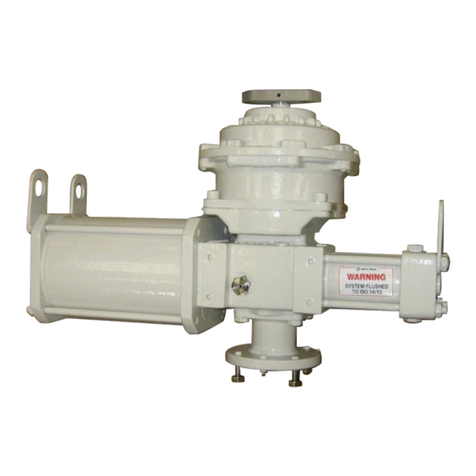
BIFFI
BIFFI RPHD-10 User manual
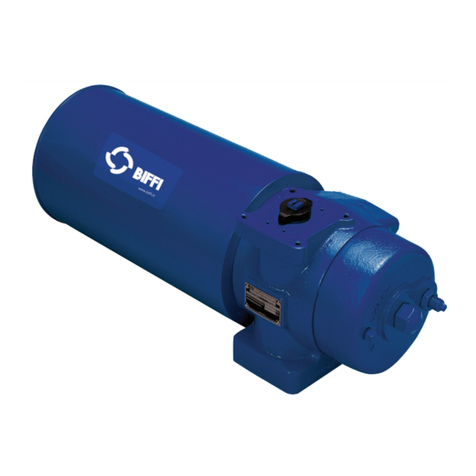
BIFFI
BIFFI FCB Series User manual
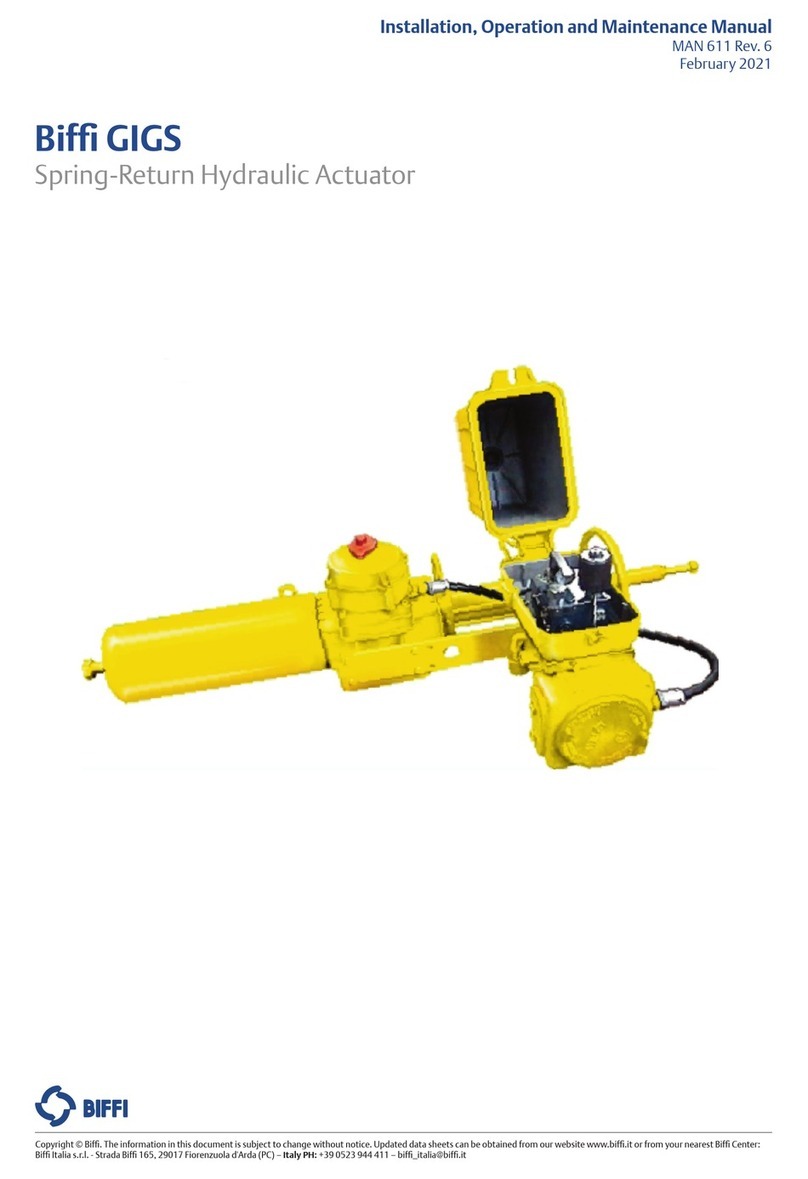
BIFFI
BIFFI GIGS Series User manual

BIFFI
BIFFI OLGA User manual
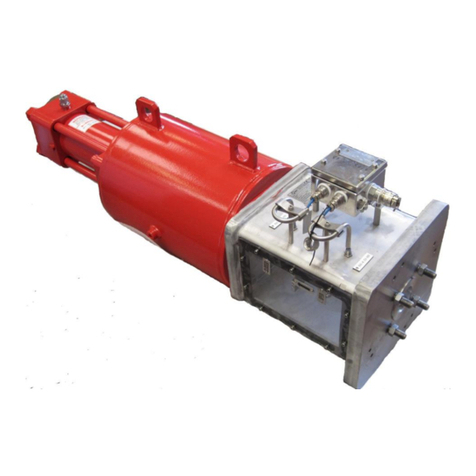
BIFFI
BIFFI HLAS User manual
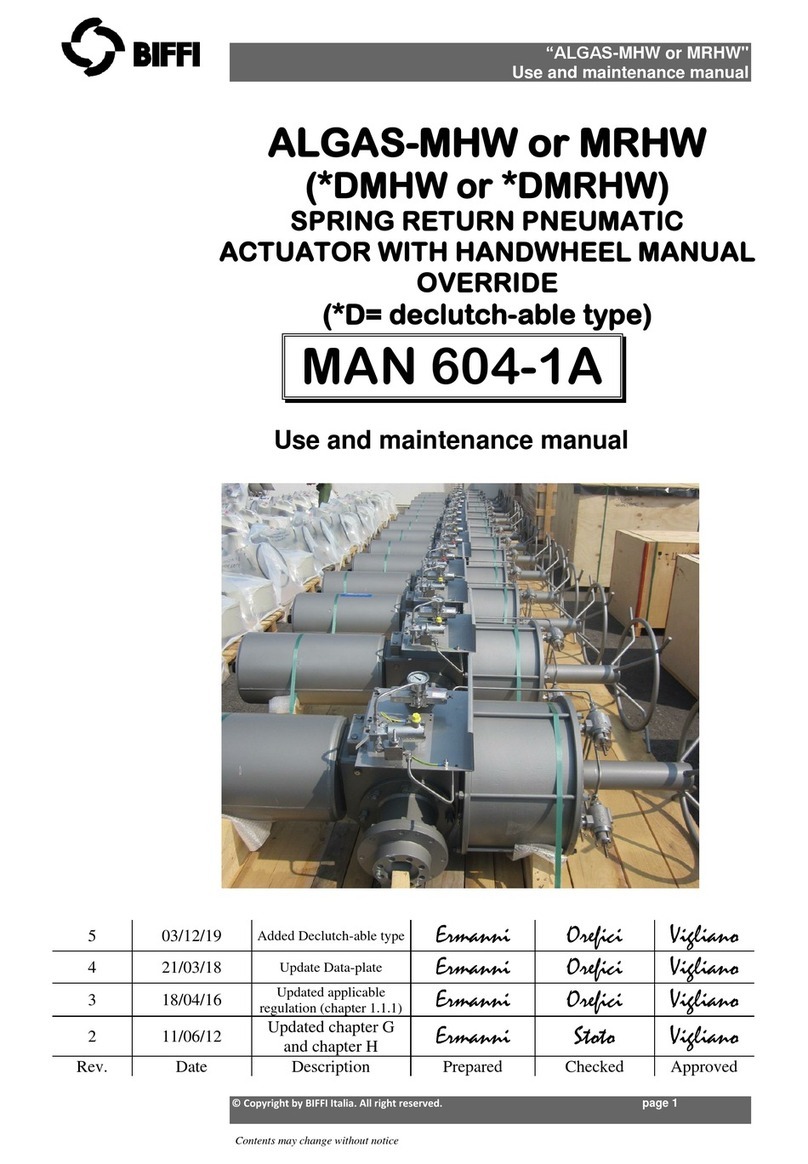
BIFFI
BIFFI ALGAS-MHW User manual
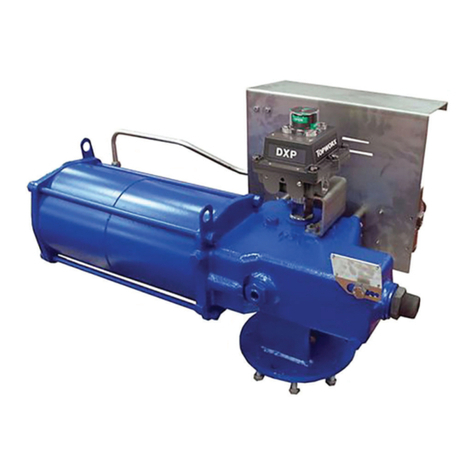
BIFFI
BIFFI RPS Series User manual
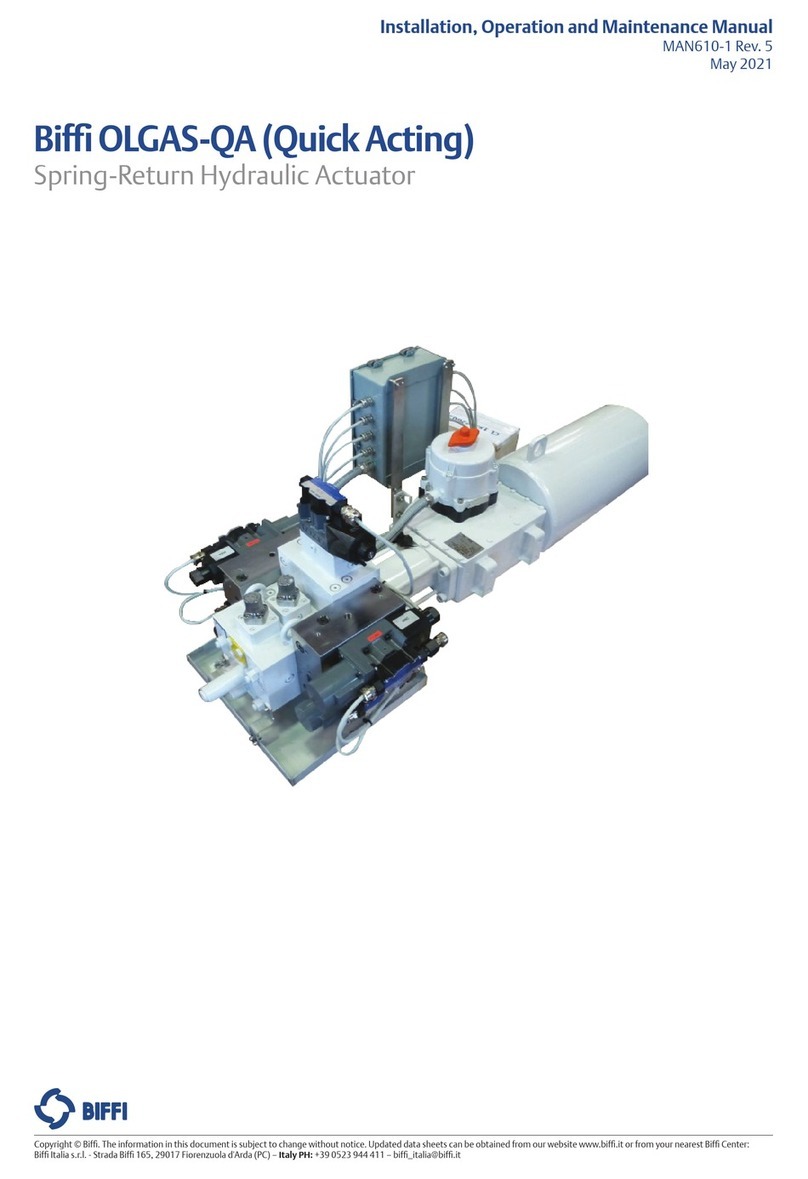
BIFFI
BIFFI OLGAS-QA User manual
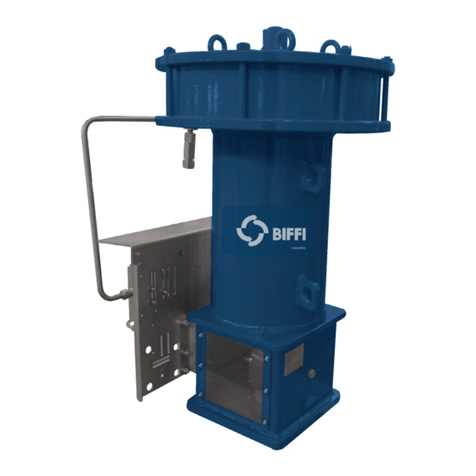
BIFFI
BIFFI PLAS Series User manual

BIFFI
BIFFI RPS User manual
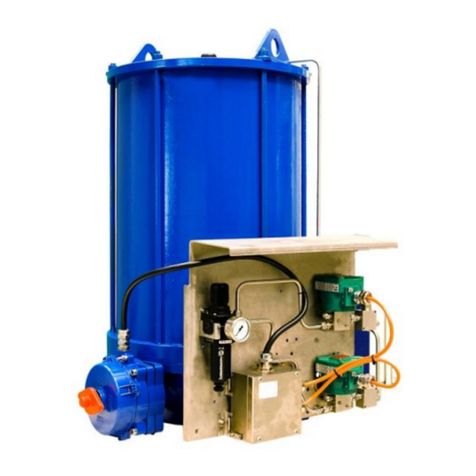
BIFFI
BIFFI TPS Series User manual

BIFFI
BIFFI HLAS User manual

BIFFI
BIFFI ALGA - EAC User manual

BIFFI
BIFFI F02 manual

BIFFI
BIFFI OLGA-H User manual
